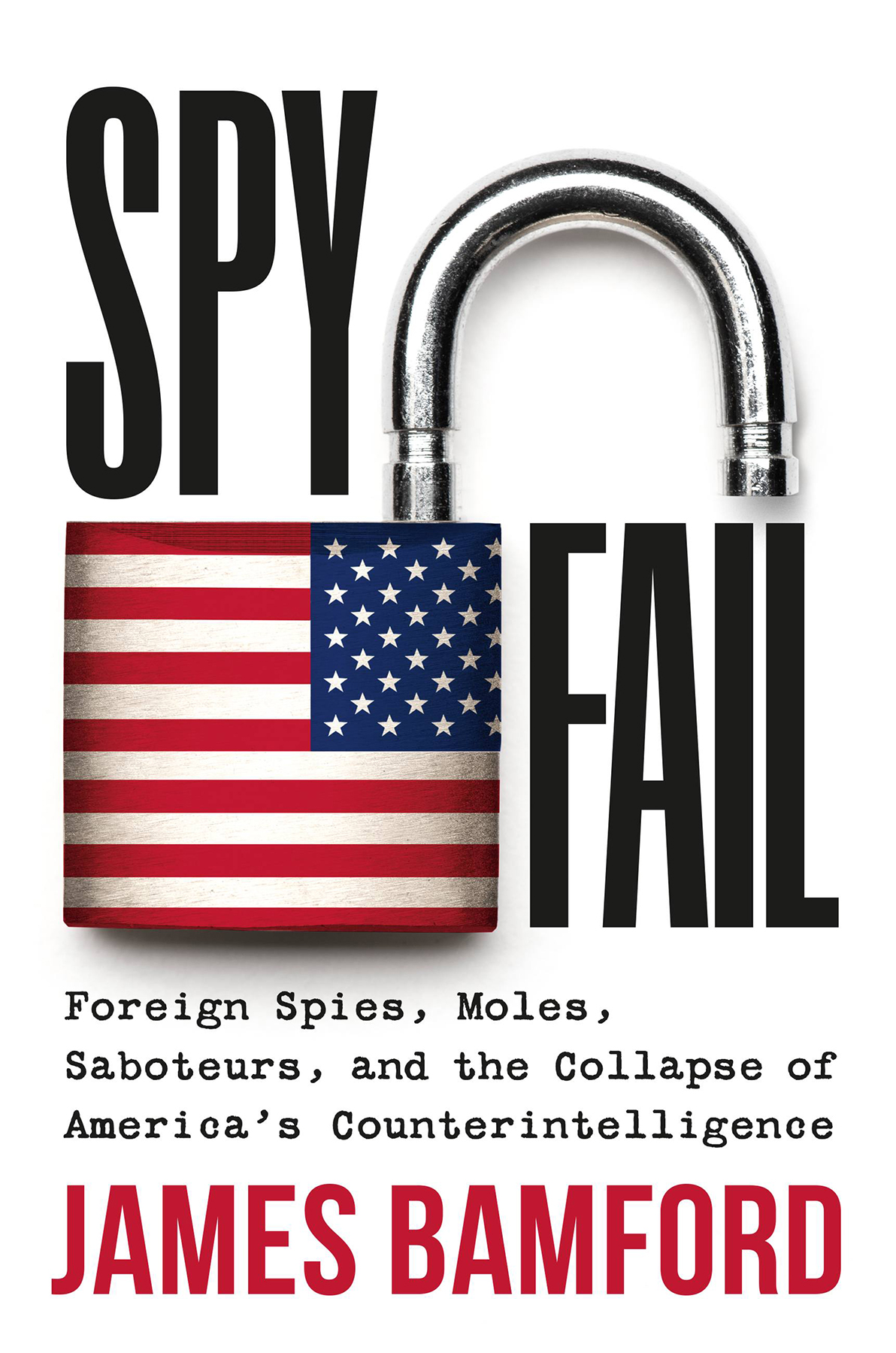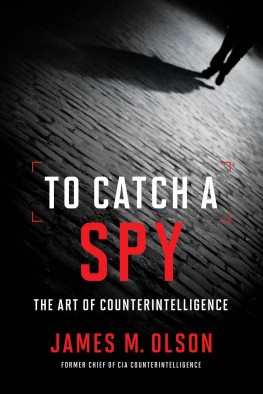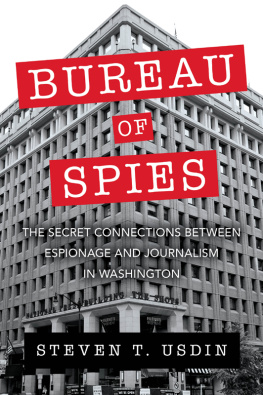
Copyright 2023 James Bamford
Cover design by Jim Datz. Cover copyright 2023 by Hachette Book Group, Inc.
Hachette Book Group supports the right to free expression and the value of copyright. The purpose of copyright is to encourage writers and artists to produce the creative works that enrich our culture.
The scanning, uploading, and distribution of this book without permission is a theft of the authors intellectual property. If you would like permission to use material from the book (other than for review purposes), please contact permissions@hbgusa.com. Thank you for your support of the authors rights.
Twelve
Hachette Book Group
1290 Avenue of the Americas, New York, NY 10104
twelvebooks.com
twitter.com/twelvebooks
First Edition: January 2023
Twelve is an imprint of Grand Central Publishing. The Twelve name and logo are trademarks of Hachette Book Group, Inc.
The publisher is not responsible for websites (or their content) that are not owned by the publisher.
The Hachette Speakers Bureau provides a wide range of authors for speaking events. To find out more, go to www.hachettespeakersbureau.com or email HachetteSpeakers@hbgusa.com.
Twelve books may be purchased in bulk for business, educational, or promotional use. For information, please contact your local bookseller or the Hachette Book Group Special Markets Department at special.markets@hbgusa.com.
Library of Congress Cataloging-in-Publication Data
Names: Bamford, James, author.
Title: Spyfail : foreign spies, moles, saboteurs, and the collapse of Americas counterintelligence / James Bamford.
Description: First Edition. | New York ; Boston : Twelve, [2023] | Includes index.
Identifiers: LCCN 2022037061 | ISBN 9781538741153 (Hardcover) | ISBN 9781538741177 (eBook) Subjects: LCSH: EspionageUnited States. | Internal securityUnited States. | National securityUnited States. | Intelligence serviceUnited States.
Classification: LCC JF1525.I6 B36 2023 | DDC 327.1273dc23/eng/20220815
LC record available at https://lccn.loc.gov/2022037061
ISBNs: 978-1-5387-4115-3 (hardcover), 978-1-5387-4117-7 (ebook)
E3-20221110-JV-NF-ORI
The Puzzle Palace
Body of Secrets
A Pretext for War
The Shadow Factory
To Mary Ann,
For the adventures past
And the adventures yet to come.
To Tom,
For your unfailing support,
and your enduring friendship.
On the morning of August 8, 2022, a conga line of black SUVs, crowded with several dozen heavily armed FBI agents and escorted by local police cruisers, arrived at 1100 South Ocean Boulevard in Palm Springs, Florida. Ahead were a pair of closed white doors beneath an elaborate archway covered in glazed Spanish tiles, and in front was a small squad of armed Secret Service agents. For the first time in history, the home of a former United States president was about to be raided by federal law enforcement agents, as if on a drug bust or the arrest of a wanted fugitive. The unprecedented operation was being carried out by the Justice Departments counterintelligence section, responsible for catching spies. And the search warrant indicated that there was probable cause that the occupant was committing a crime under the Espionage Act by refusing to return classified documents.
The man behind the unprecedented raid was an obscure bureaucrat in a little known job in a nameless, nondescript building in downtown Washington, DC. He was Jay I. Bratt, the chief of the counterintelligence section of the Justice Department, who began his career prosecuting used car dealers for fraudulently changing odometers, and fruit drink companies for watering down orange juice containers. With an office behind the door to Room 10100 on the top floor of 600 E Street NW, a red-brick building plastered with torn handbills for the rapper YoungBoy and a march on Washington for voters rights, Bratt was the countrys top counterspy. And now instead of hucksters and secret agents, he was going after a former president of the United States.
Long before the raid at Mar-a-Lago, I began looking deeply into U.S. counterintelligence and security operations. And as detailed extensively in SpyFail, I discovered dangerous incompetence and vast politicization. Under both presidents Obama and Trump thieves were able to walk away with more than half a billion pages of documents classified higher than top secret, some dealing with U.S. war plans, many of which ended up in both Russia and China. And that was after the supposed crackdown following the million or so documents removed by whistleblower Edward Snowden, many of which were made public.
During the Obama administration, another thief was able to steal nearly all of the NSAs highly dangerous cyberweapons, the cyber equivalent of loose nukes, and put them up for auction. Eventually they ended up in the hands of Russia and North Korea, where in 2017 they were used to cause a worldwide cyberpandemic that shut down hospitals and medical facilities all over the world, including in the United States, thus turning our own weapons against us. And although the cyber thief left many clues, the counterintelligence agents have never come close to catching him. As a result, he continued to sell the weapons to whatever government or terrorist would pay for them. Instead, the FBI counterspies spent much of their time going after low-level whistleblowers like Thomas Drake, Chelsea Manning, John Kiriakou, Daniel Hale, Terry Albury, and Reality Winner, who was sentenced to nearly five years in prison for leaking a single document to the press.
Due to extensive politicization and incompetence, under both Obama and Trump, the country also became flooded with spies and covert operators. Many are Americans who have agreed to spy on and conduct operations against other Americans on behalf of a foreign government. And then there are the moles. During the entire 2016 election season, foreign moles went completely undetected and were able to penetrate the very highest levels of both the Trump and Clinton campaigns. In the same way, the FBIs own counterintelligence divisionthe people hunting for spieswas penetrated almost continuously for nearly forty years, until just recently, by both Russian and Chinese moles, resulting in dozens of deaths to cooperative agents in both countries.
Nor did the counterintelligence agents discover that in 2016 former CIA and FBI agents had gone to work for a foreign political organization planning a bloody Russian coup and assassination plot on a friendly ally. It was allegedly their job to exfiltrate the plotters. Around the same time, because of dangerous leaks at the highest levels of the CIA, the United States lost its most valuable spy in Russia, an agent-in-place in President Putins Kremlin officea spy who would have been invaluable during the war in Ukraine and as nuclear tensions escalate.
SpyFail is the first book to take a close look at this vast breakdown of Americas counterespionage system. In my bestselling trilogy on the National Security Agency (NSA), I investigated how the agency targets countries around the world, and how intrusive the surveillance has become at home. Now in SpyFail, I investigate how foreign countries target Americans at home, and how ill equipped the United States is to stop them. These countries include adversaries such as North Korea, China, and Russia, and allies such as Israel and the United Arab Emirates.











